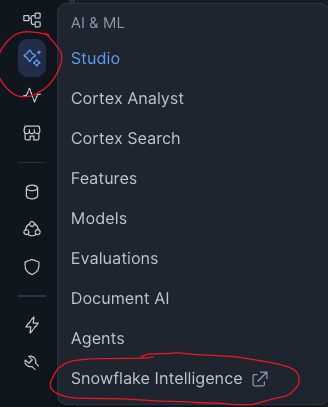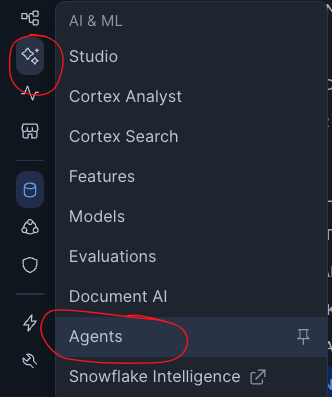Snowflake Intelligence: The MVP for MVPs
by Christopher Marland, Snowflake Data Superhero & Solution Architect at Aimpoint Digital
A neglected benefit of Cortex Playground is the ability to interact with a ChatGPT-style interface and just ask questions. I decided to ask Claude 4 Sonnet the following question: What does the acronym "MVP" stand for? It returned this answer:
- Most Valuable Player - Commonly used in sports to recognize the best performing athlete in a game, season, or tournament
- Minimum Viable Product - A business/tech term referring to a basic version of a product with just enough features to satisfy early customers and gather feedback
- Most Valuable Professional - Sometimes used in business contexts to recognize outstanding employees
Snowflake Intelligence, I think, is the Most Valuable Professional for achieving a Minimum Viable Product. When testing and trying out Cortex Agents, it’s an incredibly valuable interface to get end-users using the tool.
Our partners at Snowflake stress that Snowflake Intelligence belongs in production, and that’s true, however, I want to focus on its potential as a tool for developing Agentic solutions in Snowflake. Whether Snowflake Intelligence belongs in the final solution, it ought to be an integral part of development and testing.
The Unviability of Minimum Viable Products
A key issue with “Minimum Viable Products”, is they often entail useless code resulting from a need to “just show it works”. This inevitably results in sunk costs for developers, and a consequent loss of productivity.
With Snowflake Intelligence, you can avoid that.
I remember – earlier in the year – when I was managing a project that used a Cortex Agent, back in the pre-Snowflake Intelligence days. We had to spend a decent amount of time building a Streamlit interface for our Agent, despite the fact the solution was to be integrated into a React application.
Today, I am scoping three projects needing an Agentic MVP and I can happily tell clients that Snowflake Intelligence is going to save them a lot of (chargeable) hours.
What is Snowflake Intelligence?
Simply put, Snowflake Intelligence is a pre-built interface for any and all Cortex Agents you wish to deploy in your Snowflake account.

You can reach it by clicking on the three stars icon on the left-hand side of your Snowsight interface, and clicking on the last option.
Immediately, you’re greeted by a ChatGPT-style interface where you can select an Agent to chat to.

Or, if you prefer, you can click on the Agents part of the sidebar and select a little more specifically.

Above is the list of Cortex Agents we’ve put into Snowflake Intelligence in our Sandbox account.
Deploying to Snowflake Intelligence
This part was what confused me, at first. I spent a while hopelessly clicking around, trying to work out where I find a big list of Cortex Agents.
It turned out that that’s not how it works. To deploy to Snowflake Intelligence, you must perform three steps:
- Create a database called SNOWFLAKE_INTELLIGENCE
- Create a schema called SNOWFLAKE_INTELLIGENCE.AGENTS
- Create an Agent within that schema
You can perform Step 3 in the Snowsight interface by imitating the below:

Click on the three stars icon on the left-hand side of your Snowsight interface, and then select “Agents”, the penultimate option.

Click “Create Agent” and ensure that you tick the box that says, “Create this agent for Snowflake Intelligence”.
Why This is Great for Developing MVPs
Now that you understand what Snowflake Intelligence is, and how to deploy Cortex Agents to it, hopefully the point is beginning to click.
What slows down Cortex Agent development is building custom interfaces to interact with your MVP, or to do initial testing. Code that, inevitably, goes into the great virtual dustbin in the sky. Today, you can plug in Snowflake Intelligence and just get on with it.
And this point is extensible. Cortex Agents are an AI-orchestration wrapper around three different things:
- Cortex Analyst – for Text2SQL queries based around your data, as defined in semantic models/views
- Cortex Search – for retrieval augmented generation, when you want your data (structured or unstructured) to inform an LLM by performing rapid search upon rows and rows of it
- Custom Tools – give your Cortex Agent a procedure or function that it can run, defining its own inputs
This means, especially in the case of Cortex Analyst & Cortex Search, you can build a one-tool Cortex Agent and link it up to Snowflake Intelligence.
Aimpoint’s Advice?
If you want our advice, you should never build another prototyping interface for your Snowflake AI solutions again. It’s unnecessary. You can now develop, fail, and test faster with a pre-built interface.
That also means we can develop, fail, and test faster, too. Faster delivery is great when consultants bill by the hour. As such, there’s never been a better time to have Aimpoint Digital help put your snowy, robotic dreams into production.




%20for%20Your%20Business%20Use%20Case.png)
.png)